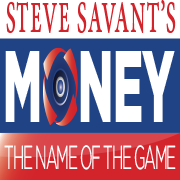 Mesa 11/3/2017 11:00:00 AM
Mesa 11/3/2017 11:00:00 AM
News / Finance
Building Your Financial Future
Budget in Place, Spending Under Control, Now What?

There are a variety of financial products available to you, and I want to spend a few moments explaining their differences. Before we continue, I want to point out that many of these products present risks. The old saying goes “the higher the risk the higher the return.” This is especially true in the world of finance. A very risky strategy can yield tremendous results. It can also produce tremendous losses. Before entering into any investment strategies please check with your financial professional. Purchasing stocks makes you a shareholder in a corporation’s assets and earnings. Your ownership is based upon the amount of stock you hold. Stocks are risky. If the company makes good decisions, your investment grows. If they make poor decisions, you could lose your investment. A Bond is, in essence, a loan. You, as an investor, loan money to a company for a defined period of time at a fixed interest rate. Interest on Bonds is generally paid on a semi-annual basis. If you have a pension, you’re among the lucky ones. Pensions were popular in the past, but have waned over the last few decades. A pension is a retirement plan, usually tax exempt, where an employer makes contributions toward a pool of funds set aside for an employee's future benefit. The pool of funds is then invested on the employee's behalf, allowing the employee to receive benefits upon retirement. A 401(k) is another type of plan offered by employers. In a 401(k) you make pre-tax contributions toward your fund. Many employers match your contribution, up to a certain dollar amount. This is FREE money, so I urge you to reexamine you 401(k) contributions to take advantage of this great opportunity. Mutual Funds are a pool of funds operated by managers who invest in stocks, bonds, and other investment vehicles. The managed funds are invested according to the objectives stated in the prospectus. For instance, some growth funds invest in volatile markets. If they invest correctly, you win big. If not, you could lose your entire investment. With a traditional IRA, you contribute pre-tax dollars to an account, which can be used to invest in a variety of vehicles – stocks, bonds, mutual funds, etc. While you don’t pay taxes on the money you contribute, you do pay when you retire and begin taking the money out of your IRA. The alternative to this, which is a great choice for most people, is a Roth IRA. The difference between the Roth IRA and the Traditional IRA is when you pay taxes. The main benefit of the Roth IRA is that you use after-tax money to fund it, so when you reach retirement age you will not pay ANY taxes on the withdrawals.
A lot of people ask “when is the best time to start investing?” The best answer is, when you get your first paycheck. Starting to save in your 20s, versus your 40s has a tremendous impact on generating wealth. We can see here an example of someone investing at the age of 20 vs. 21. For example, if someone started investing when they were 20 they would have over $2 million saved up by the time they retired. If they start at 21, they’d have about $1.85 million by the time they retired -- one year cost them well over a hundred thousand dollars. As you get later on in life, we notice these numbers drop exponentially. If you start saving at 30 versus 20 you’ll generate about half the wealth that you would have if you started a decade earlier. And if you start in your 40s, you generate about a third of the wealth you would have if you started in your 30s. That’s not to say, if you’re older, that you shouldn’t start saving now. There are ways to make up for lost time, and it’s important to talk to a financial professional to determine your best course of action. Contributions to this press release were provided by the Society for Financial Awareness.
